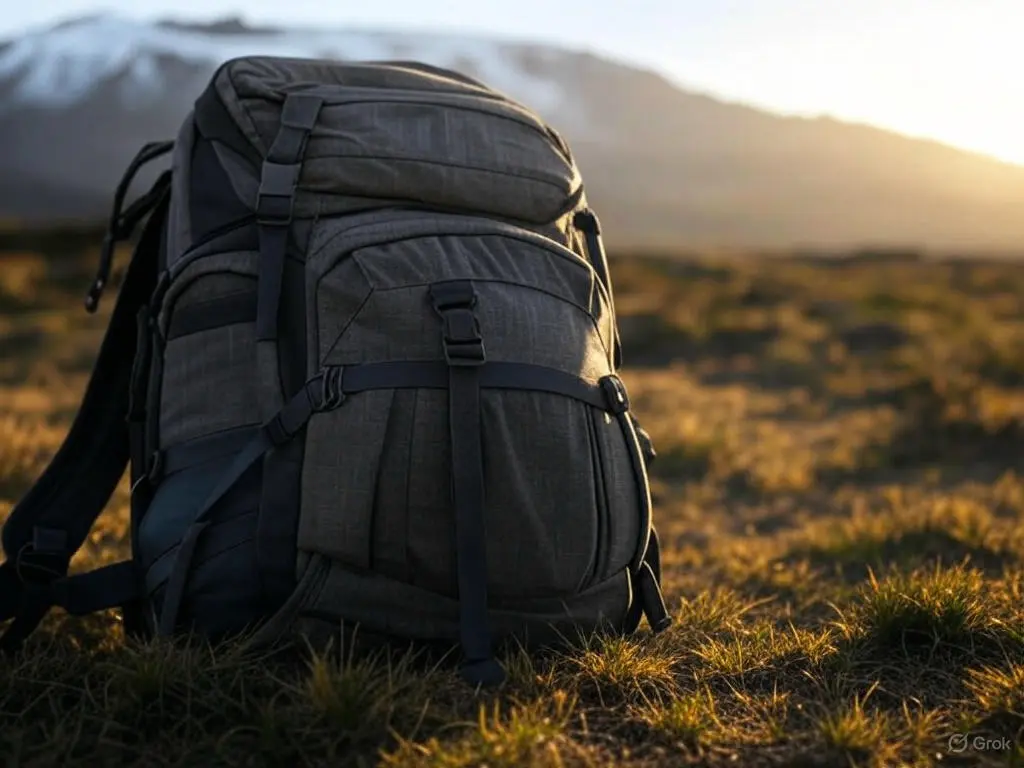Climbing Mount Kilimanjaro is a once-in-a-lifetime experience, but the wrong backpack can turn your dream trek into a painful struggle. The right Kilimanjaro backpack isn’t just about storage—it’s about comfort, weather resistance, smart design, and how well it supports you during the grueling climb.
Whether you’re carrying extra layers for the freezing summit, water for hydration, or high-energy snacks, your backpack must be reliable and well-fitted to make your journey smooth. But with so many options on the market, how do you know what to choose?
In this guide, we’ll walk you through everything you need to know about selecting the best backpack for Kilimanjaro: from backpack types to key features, route-based recommendations, and the best brands based on expert and personal experience.
Backpack or Duffel Bag: What Porters and Guides Recommend
Most trekking companies recommend duffel bags (70–90L) for the gear carried by porters. These are soft-sided, waterproof, and easier for porters to strap onto their backs or carry on their heads. However, you’ll still need a reliable daypack (20–35L) to carry your daily essentials.
Pro Tip: A porter from the Lemosho route shared: “Backpacks with lots of straps and hard frames can be tricky to carry. Duffels save our backs.”
Main Types of Backpacks for Kilimanjaro
| Type | Capacity | Best For | Pros | Considerations |
| Daypack | 20–35L | All trekkers | Lightweight, hydration compatible | Limited space |
| Trekking Pack | 40–60L | Independent trekkers | More storage, good support | Heavier to carry |
| Expedition Pack | 65L+ | Experienced hikers carrying all gear | Max capacity | Bulkier, overkill if using porters |
Route Tip: On longer routes like Lemosho or Northern Circuit, a well-ventilated, larger daypack is especially useful due to changing weather and extended trial days.
What to Look for in a Kilimanjaro Backpack
- Fit and Comfort
Adjustable shoulder straps, padded hip belts, and ventilated back panels are a must.
Make sure the hip belt sits snugly on your hips—not your waist. - Weight and Durability
Choose lightweight materials like ripstop nylon.
Reinforced stitching and zippers help your pack survive rugged conditions. - Weather Resistance
Look for water-resistant materials or include a rain cover.
Kilimanjaro weather shifts quickly—sun, rain, and even snow in one day. - Hydration Compatibility
Packs with internal hydration sleeves and hose ports are ideal.
Alternatively, ensure side pockets fit your water bottles securely. - Storage and Organization
Multiple compartments help you separate gear: snacks, layers, electronics.
Look for quick-access zippers for snacks or rain jackets. - Ventilation
Mesh or trampoline-style back panels reduce sweating and improve airflow. - Compression Straps
Stabilize gear and improve load balance.
Prevents items from shifting during steep ascents.
Best Backpack Models for Kilimanjaro
| Model | Capacity | Highlights |
| Osprey Talon 33 | 33L | Lightweight, hydration-ready, great for daily use |
| Deuter Aircontact Lite 40+10 | 50L | Adjustable fit, great ventilation, expandable |
| Gregory Baltoro 65 | 65L | Heavy load support, ideal for self-supported hikes |
| The North Face Banchee 50 | 50L | Dynamic suspension, sleek profile |
| Osprey Atmos AG 65 | 65L | Anti-Gravity suspension, unbeatable comfort |
If you’re not sure what kind of pack best suits your hike, check out our Kilimanjaro Climbing Packages to see what’s included and what’s expected for each route.
Essential Backpack Checklist
- Capacity 20–35L (daypack)
- Padded hip belt
- Rain cover
- Hydration sleeve or water bottle pockets
- Front/side access zippers
- Multiple compartments
- Adjustable fit for torso
What Not to Pack in Your Backpack
- Cotton clothing (doesn’t insulate when wet)
- Heavy or hardcover books
- Glass bottles
- Unsealed snacks (they attract animals)
Personal Experience: The Backpack That Made All the Difference
When I was preparing for Kilimanjaro, I originally chose a generic hiking backpack. It felt fine during home trials, but quickly became a burden on the trail. Poor weight distribution and uncomfortable straps left me sore by day two.
Switching to the Osprey Atmos AG 65 changed everything. The anti-gravity suspension and ventilation system kept me dry and balanced. Quick-access pockets meant I never had to dig for snacks or rain gear. Comfort directly impacted my mood, energy, and success on summit day.
FAQs About Kilimanjaro Backpacks
Q: Can I use a backpack instead of a duffel bag?
Yes, but check with your trekking company. Duffels are often preferred for porter use. If using a backpack, ensure it’s soft-sided and under 15 kg.
Q: What size daypack is best for Kilimanjaro?
20–30 liters is ideal. It should fit snacks, a hydration system, rain jacket, gloves, headlamp, and small personal items.
Q: What backpack features are most important?
Fit, adjustability, hydration compatibility, and weather resistance. A rain cover is a must.
Q: Should my backpack have an internal or external frame?
Internal frames are better for Kilimanjaro—they’re closer to your body and more stable for uneven terrain.
Q: How fit should I be to carry my own pack?
If you plan to carry more than a daypack, train with weight on hikes. Build core strength and shoulder endurance.
Final Thoughts
Choosing the right Kilimanjaro backpack is about more than brand or looks—it’s about how it supports you physically and logistically on the climb. Prioritize comfort, hydration access, and organization. Whether you go with a Talon 33 for daily use or a Gregory Baltoro for full gear carry, test your pack before the trek. Your backpack will become your most trusted companion on the mountain.




